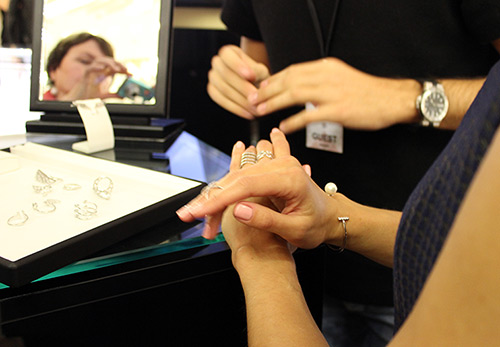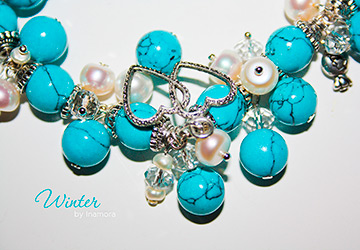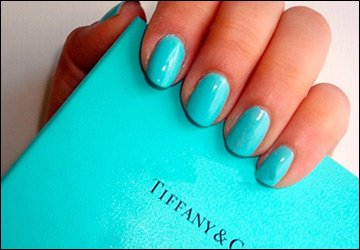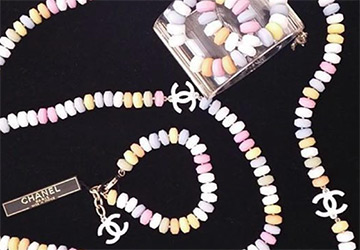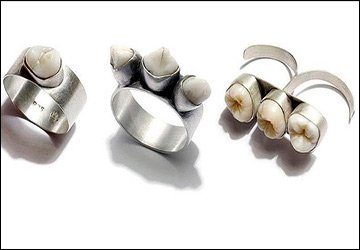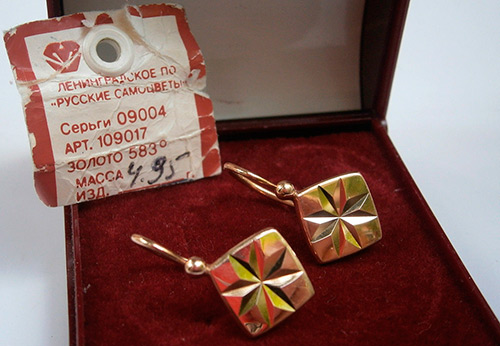Interview
Stylish DIY jewelry
Oksana Rogalskaya: I always wanted to create something beautiful with my own hands
A stylish girl should have stylish jewelry. After all, we all know the devil is in the details. Jewelry can range from well-known brands to handcrafted, inherited and purchased at a sale. The materials from which our rings, earrings, bracelets and beads are made are also different. It can be gold and silver jewelry, jewelry with precious stones, or beads and felt.
Oksana Rogalskaya (Pektorals brand) will tell the readers of mystyle.decorexpro.com/en/ about very unusual jewelry made of porcelain and metal. Oksana, a true master of her craft, will tell us about how a sheet of metal and a piece of porcelain turns into an elegant decoration, what kind of jewelry she creates and what are their features, as well as whether future artists should study in the Czech Republic.
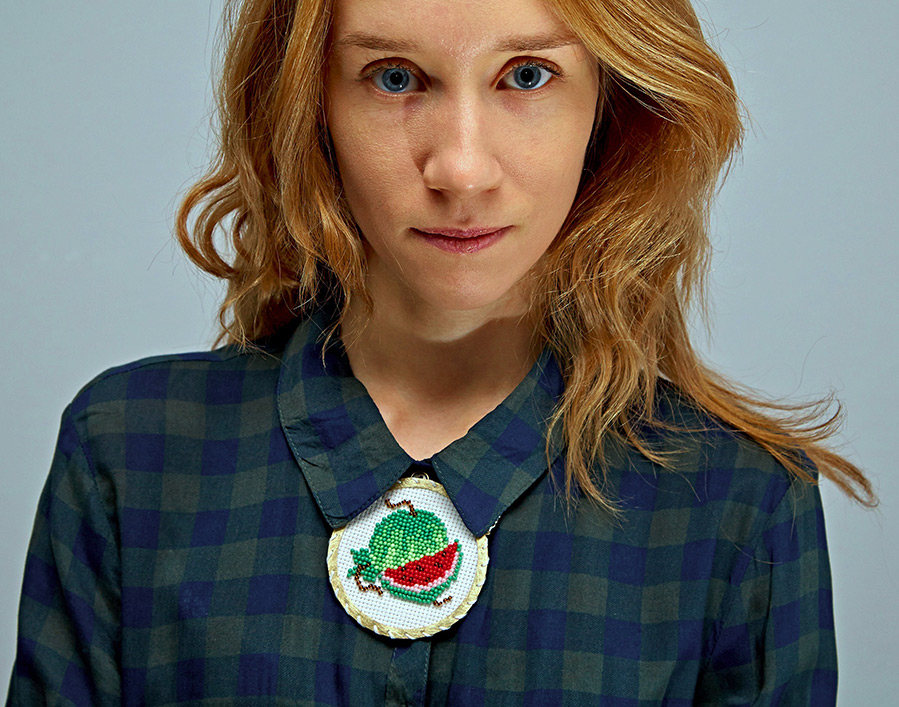
Oksana, did you dream of creating jewelry as a child?
Since childhood, I dreamed of realizing myself in a creative profession, which I began to strive for from about the 5th grade. Of course, I did not foresee the fact that this would be specifically the manufacture of jewelry and did not dream about it - I just always wanted to create something beautiful with my own hands.
I decided to start creating jewelry while studying in the Czech Republic. In the process of studying, I realized my ideas in the form of jewelry made of various materials and realized that this was mine, that I would like to continue doing this. In my opinion, jewelry is exactly the area where you can fantasize endlessly (at least for me), coming up with and combining a variety of shapes, colors, textures and materials.
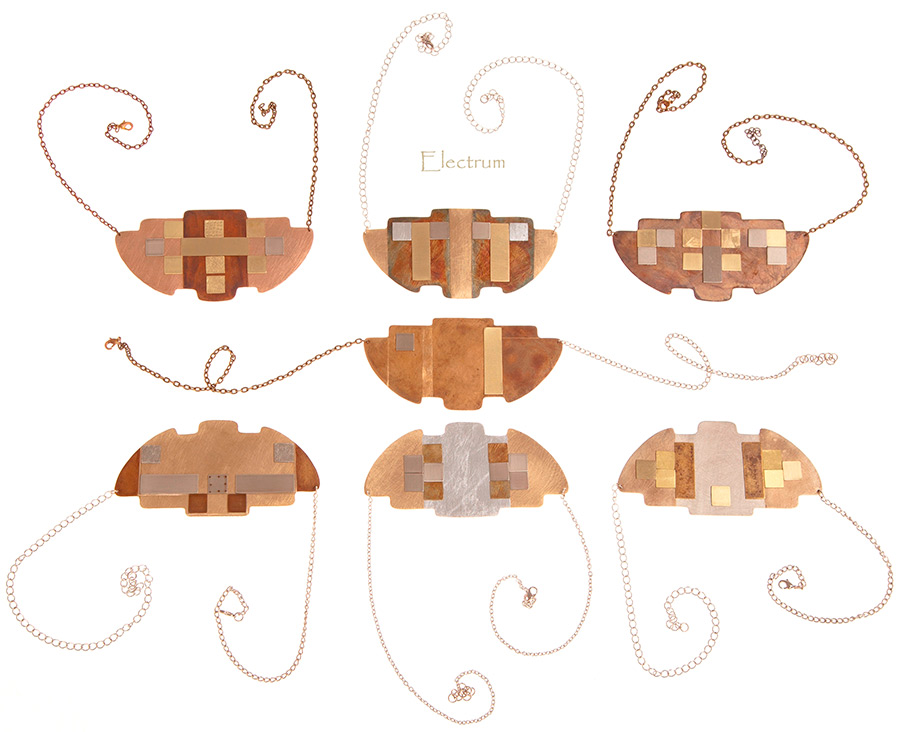
You make jewelry out of complex materials (metal, porcelain). Why did you choose these materials? Where do you buy raw materials for making jewelry?
I really like the contrasting combination of white delicate porcelain and dark aged metal, so I often combine these materials in my jewelry. In my opinion, this is a very successful color and texture combination.
I buy raw materials for my jewelry in Belarus: porcelain can be found in art stores in the form of small briquettes, with metal it is more difficult - you have to order a large sheet at once, and some types of metals can be found in small quantities at the Pole miracles in Zhdanovichi. In general, at this kind of flea markets, you can find many different materials for creativity (smiles).
It is much more difficult to find a professional tool for working with metal in Belarus - you have to order from Russia or Europe.
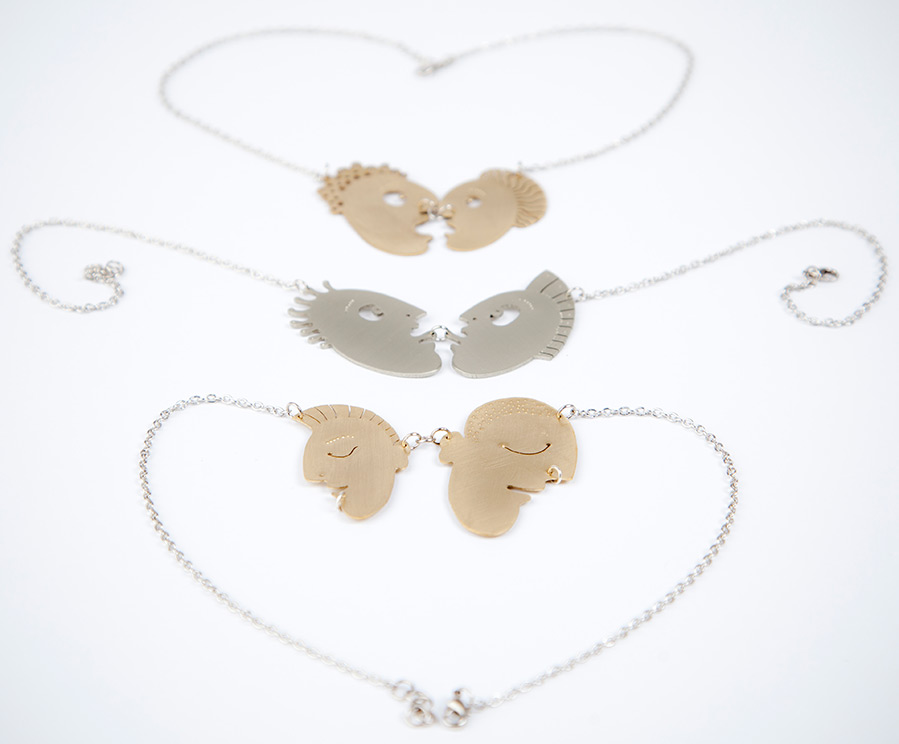
What kind of jewelry do you like to make the most, from what kind of material, maybe some particular type of jewelry - earrings, for example, or rings?
Most of all I like to work with different types of metal: copper, cupronickel, brass. I like to play with textures, combining them with each other. I also like working with plexiglass, and, of course, with porcelain. As for the type of jewelry, the most interesting thing for me is to create necklaces and brooches.
Earrings I don't really like to do because I have to do two identical objects. That is why I don’t like to replicate my products, I don’t like to do the same work several times. For me it is much more interesting and pleasant to come up with new jewelry.
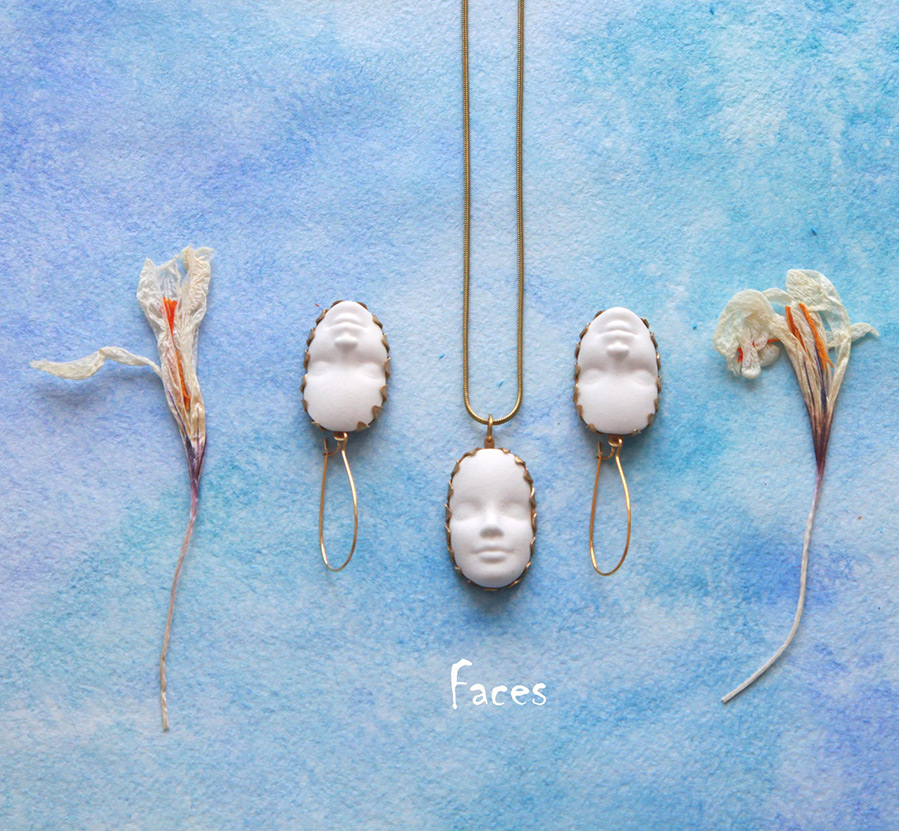
Tell us a little about the technology. How, for example, is the process of transforming a piece of porcelain or metal into a necklace or brooch?
The process of creating a porcelain jewelry is quite long: you need to mold a model of a future product from plasticine, then remove the plaster mold from this model, modify it,then you need to prepare a porcelain slip (in other words - liquid porcelain): dissolve dry porcelain in water to the desired consistency, strain from lumps.
When both the mold and the porcelain mass are ready, we proceed to casting the product: pour the porcelain slip into the mold and wait until the gypsum absorbs a certain amount of moisture, while it is necessary to periodically add the slip to the mold. When the desired thickness of the product has been formed, pour out the remaining slip from the mold, and leave the product to dry.
Next, we take out the semi-soft product from the mold and modify it with special tools (stacks). After complete drying, the product must be burned. After firing, the product is placed in a metal frame.
With metal, everything is much faster, although physically harder: we cut out the shape we need from a sheet of metal with a jigsaw, process it with files and scissor paper, you can add some texture or patina. And already at the very end we connect the finished product with fasteners, ear wires, chains.
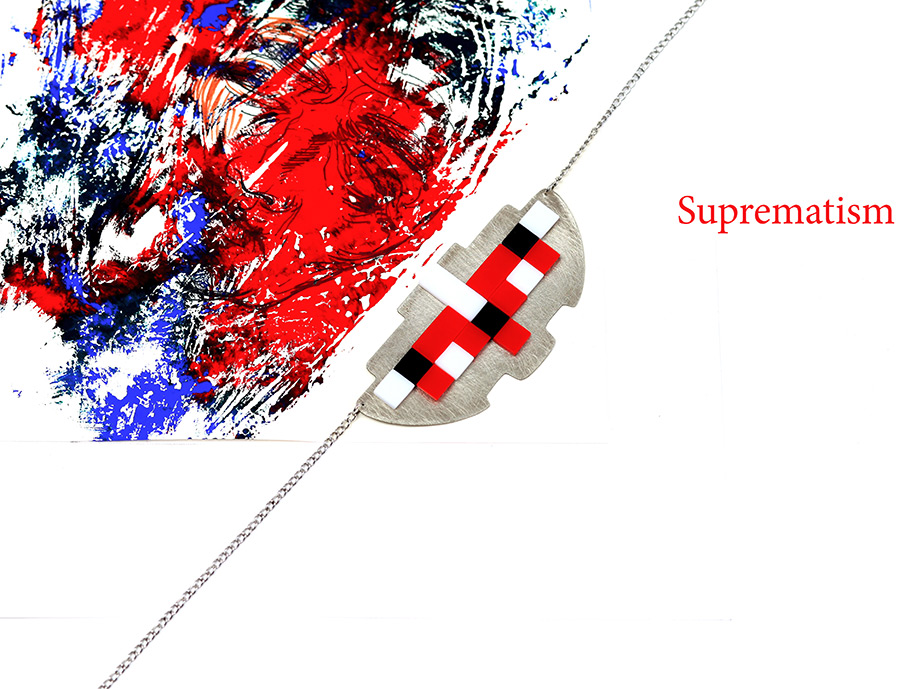
How would you describe the style of your jewelry? Who are they for? What character should a person have who will like your jewelry?
I can't say that all my jewelry is made in one particular style, although lately I have been adhering to geometric minimalism.
My jewelry is liked by different age categories: from 20 to 60 years old, I often hear admiration from the representatives of the stronger sex. Most of my products are purchased by bold creative people, which is good in itself, but I would like to see more of such people in our country.
Do you use a certain decor in your jewelry - ornament, drawings, color combinations? Is there any symbolism in your jewelry? Any specific meaning that they carry?
In my products, I use various color combinations, as well as combinations of textures and textures of various materials, I try to select harmonious and concise combinations so that the finished jewelry looks whole, being an unobtrusive accent of any image.
I do not use ornaments in my products, I rather make a certain composition of metal and plexiglass, for example, trying to combine all the elements into a single harmonious decoration. There is no specific symbolism or hidden meaning in my works, they are rather eye-pleasing things that can be used to diversify or supplement this or that image.
The source of inspiration for future jewelry can be any style in art, or the work of a particular artist, or some natural phenomenon, or anything in general.
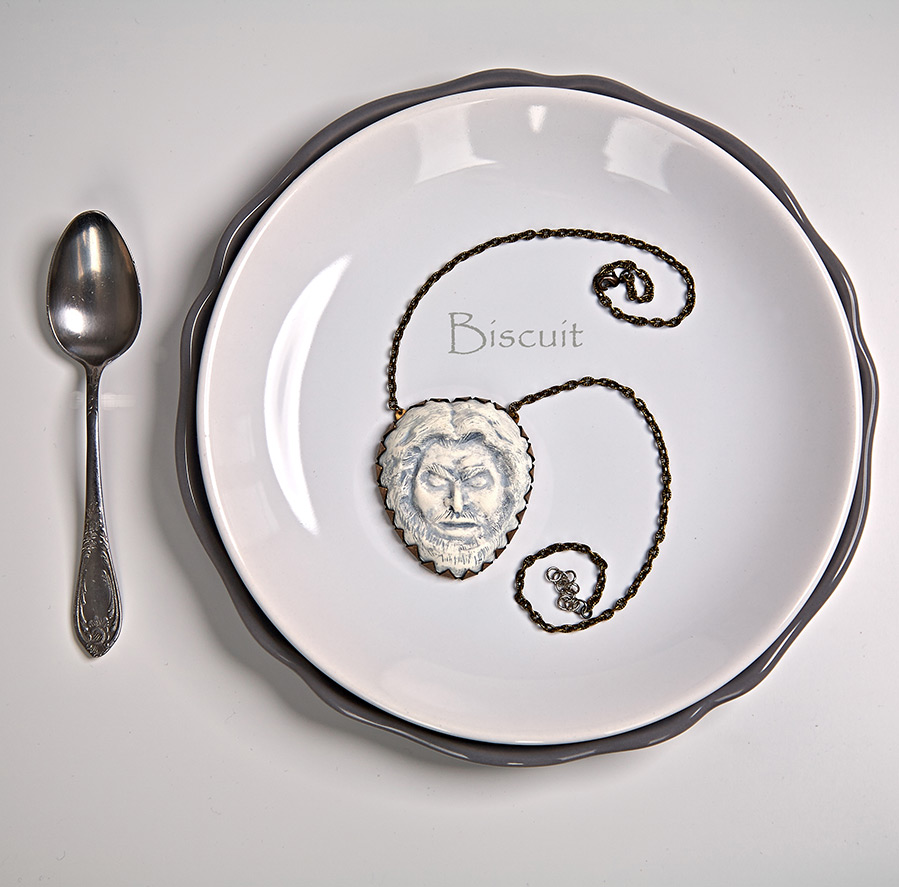
Where can you buy your jewelry? Are people today willing to pay for manual work? Do you have regular customers?
I periodically participate in Fashion Markets in Minsk, and also hand over my products to shops that sell products by Belarusian designers: "Ў", DODO, "Manual Exclusive". Also, all my products can be viewed on social networks, ordered the jewelry you like and purchased at a personal meeting or received by mail.
People are ready to pay for manual work, but not all of them, although it seems to me that gradually there are more and more such people and this makes me happy. I have no regular customers yet, but I want to believe that everything is ahead (smiles).
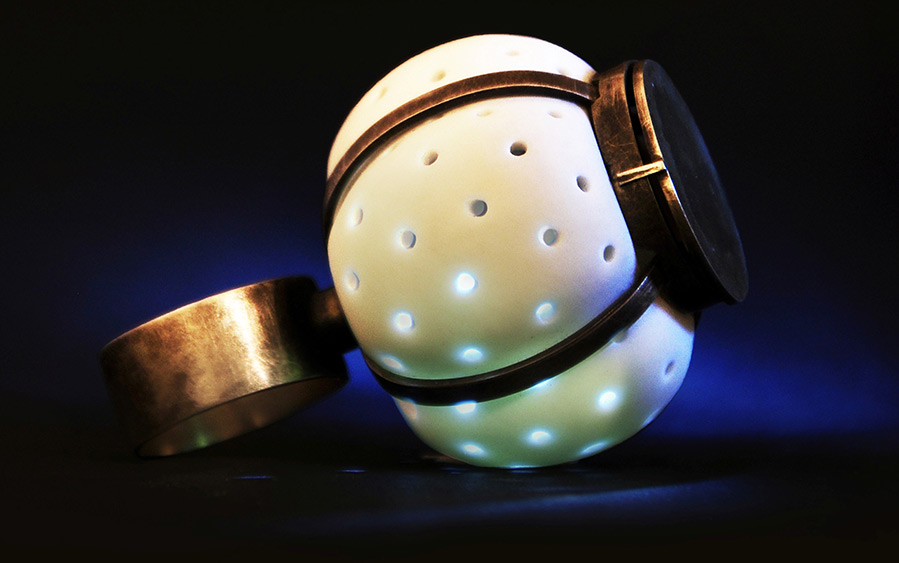
You studied in the Czech Republic. What are the features of training artists in the Czech Republic? How has studying in the Czech Republic influenced your worldview? What has brought to your work?
Studying in the Czech Republic influenced my perception of art quite strongly - it made me look at what I was doing (my ideas and products) on the other hand, taught me to think carefully about my actions when creating this or that work, liberated me in my work.
During my studies in the Czech Republic, I mainly made conceptual products, which has a very beneficial effect on my products today. I would say that in general, studying in the Czech Republic taught me to think deeper, freer and more abstract.
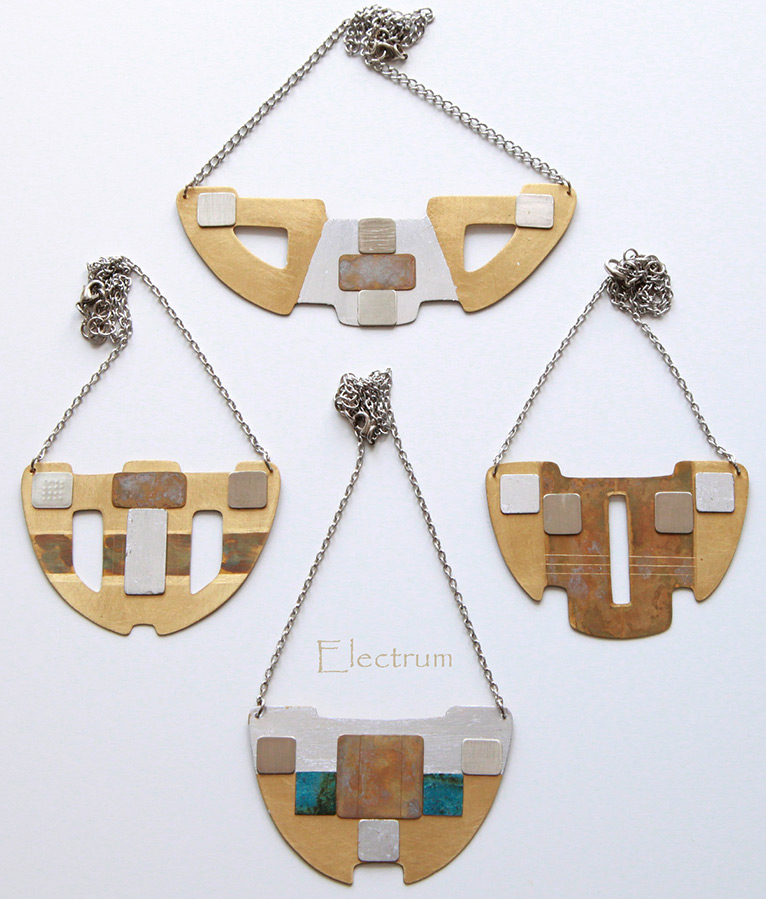
Would you recommend artists to study in the Czech Republic? And why?
If we talk about art schools, then - yes, I would recommend studying in the Czech Republic. But I would recommend studying in Belarus, because we have a strong classical school, in the Czech Republic there is a problem with this (at least in the university where I studied). For the Czechs, the main thing is the concept, for ours - the technique of execution. But, in my opinion, it is great when the products combine both.
I would generally recommend studying - it develops the brain (smiles). Personally, I studied both at the Academy of Arts (Belarus) and at the Czech University, which I do not regret at all, because both there and there I learned a lot and I am very glad that first I received an academic basis, and then I learned to combine this basic knowledge with conceptual ideas.
After studying in the Czech Republic, you returned to Belarus. Were there any plans to stay in the Czech Republic? If not, why not?
At the beginning of my studies there was a desire to stay in the Czech Republic - everything around was new and interesting, but gradually this desire faded away. Yes, life in the Czech Republic has its advantages, but there are also disadvantages.
At some point, there were more minuses, and I decided that after graduation I would return home. And today I am doing what I love, devoting most of my time to it and gradually gaining momentum. And when I hear grateful words addressed to me and see the admiring glances of my customers, I understand that all this is not in vain.
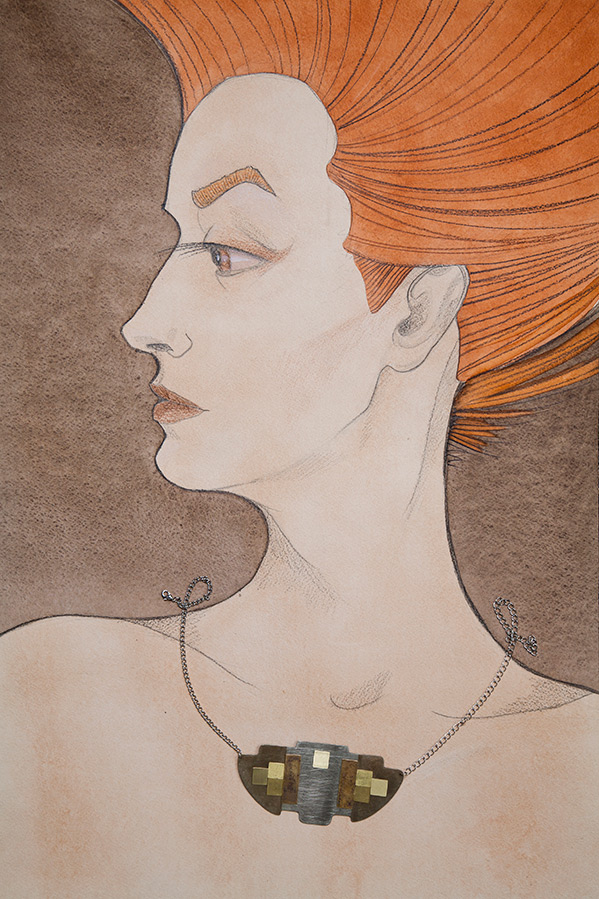
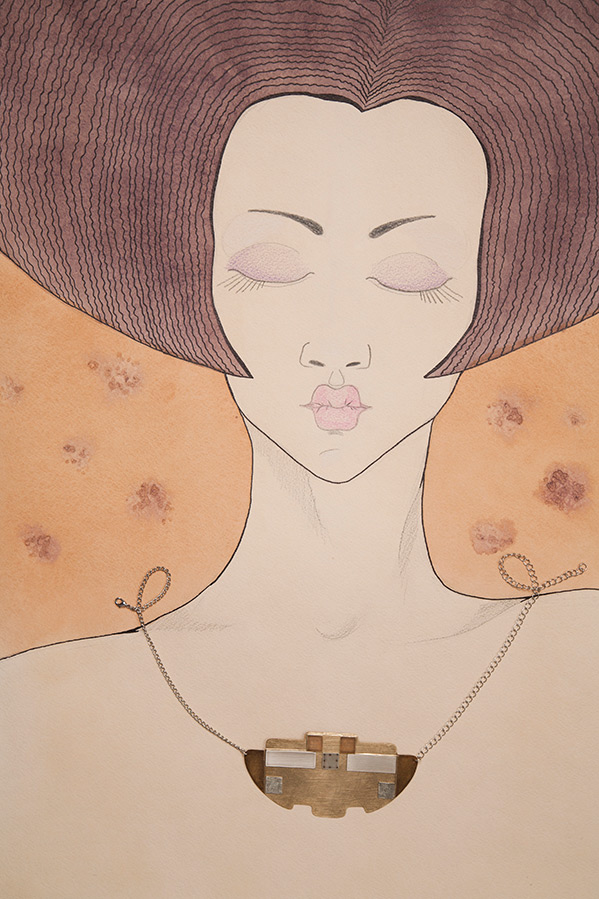
Comments and Reviews
Add a comment
Rating news
Shades of clothing that make women look younger
What shades of hair make women younger: rules and photos
Funny wedding dresses - photos and ideas
12 most expensive down jackets for the winter
How to look 25 at 40: tips from supermodels
Beautiful schoolgirls
Anti-aging haircuts and hairstyles for women
Fashionable skirts for autumn and winter
Fashionable women's trousers for the cold season
Fashionable and stylish sandals for summer 2024
Spring-summer 2024
 Fashionable dresses and tops with thin spaghetti straps
Fashionable dresses and tops with thin spaghetti straps
 Bandana tops: how to wear stylishly and beautifully
Bandana tops: how to wear stylishly and beautifully
 How to put together the perfect men's wardrobe for the summer
How to put together the perfect men's wardrobe for the summer
 Fashionable shorts for spring-summer 2024
Fashionable shorts for spring-summer 2024
 Fashionable skirts for spring-summer 2024: a guide to online shopping
Fashionable skirts for spring-summer 2024: a guide to online shopping
 The most fashionable dresses spring-summer 2024: styles and colors
The most fashionable dresses spring-summer 2024: styles and colors
 Fashionable total look 2024: ideas of images and trends
Fashionable total look 2024: ideas of images and trends
